400 stone-cut chamber tombs, filled with wall paintings and treasures, discovered in Turkey
The Roman-era tombs are in a canyon wall.
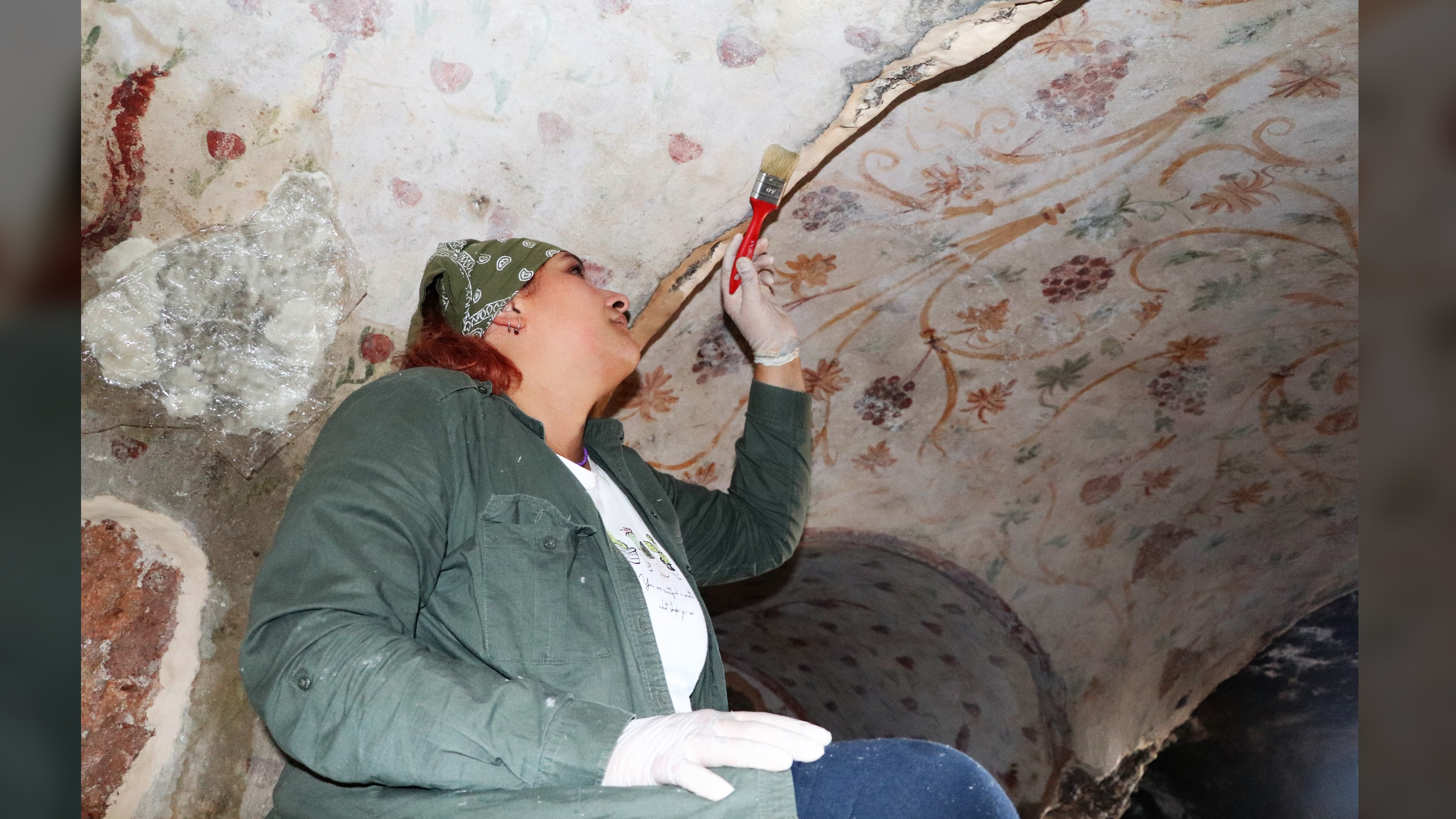
Archaeologists in Turkey have discovered 400 rock-cut chamber tombs that date to 1,800 years ago and make up part of one of the largest rock-cut chamber tomb necropolises in the world.
The team found the tombs in the ancient city of Blaundos (also spelled Blaundus), located about 110 miles (180 kilometers) east of the Aegean Sea in what is now Turkey. The city was founded during the time of Alexander the Great and existed through the Roman and Byzantine periods.
The tombs are filled with sarcophagi, many of which contain multiple deceased individuals — a clue that families used these tombs for burials over many generations, said Birol Can, an archaeologist at Uşak University in Turkey and head of the Blaundos Excavation Project.
"We think that the Blaundos rock-cut tomb chambers, in which there are many sarcophagi, were used as family tombs, and that the tombs were reopened for each deceased family member, and a burial ceremony was held and closed again," Can told Live Science in an email.
Related: Photos: Ancient treasures discovered in Cyprus tomb complex
The city of Blaundos sits on a hill surrounded by a valley, which is actually a branch of the vast Uşak canyons, one of the longest canyon systems in the world, Can said. The people of Blaundos built the necropolis into the slopes of the canyon. "Due to the rocky nature of the slopes surrounding the city, the most preferred burial technique was the chamber-shaped tombs carved into the solid rocks," he said.
Though archaeologists knew about the necropolis for more than 150 years, they have never done a systematic excavation of Blaundos, which is why Can's team began their excavation project in 2018, with the goal of documenting the ruins and preparing conservation projects. So far, they've identified two temples, a theater, a public bath, a gymnasium, a basilica, city walls and a gate, aqueducts, a shrine dedicated to an ancient Greek or Roman hero known as a heroon, and the rock-cut chamber tombs.
Sign up for the Live Science daily newsletter now
Get the world’s most fascinating discoveries delivered straight to your inbox.
"Apart from these, we know that there are many religious, public and civil structures still under the ground," Can said.
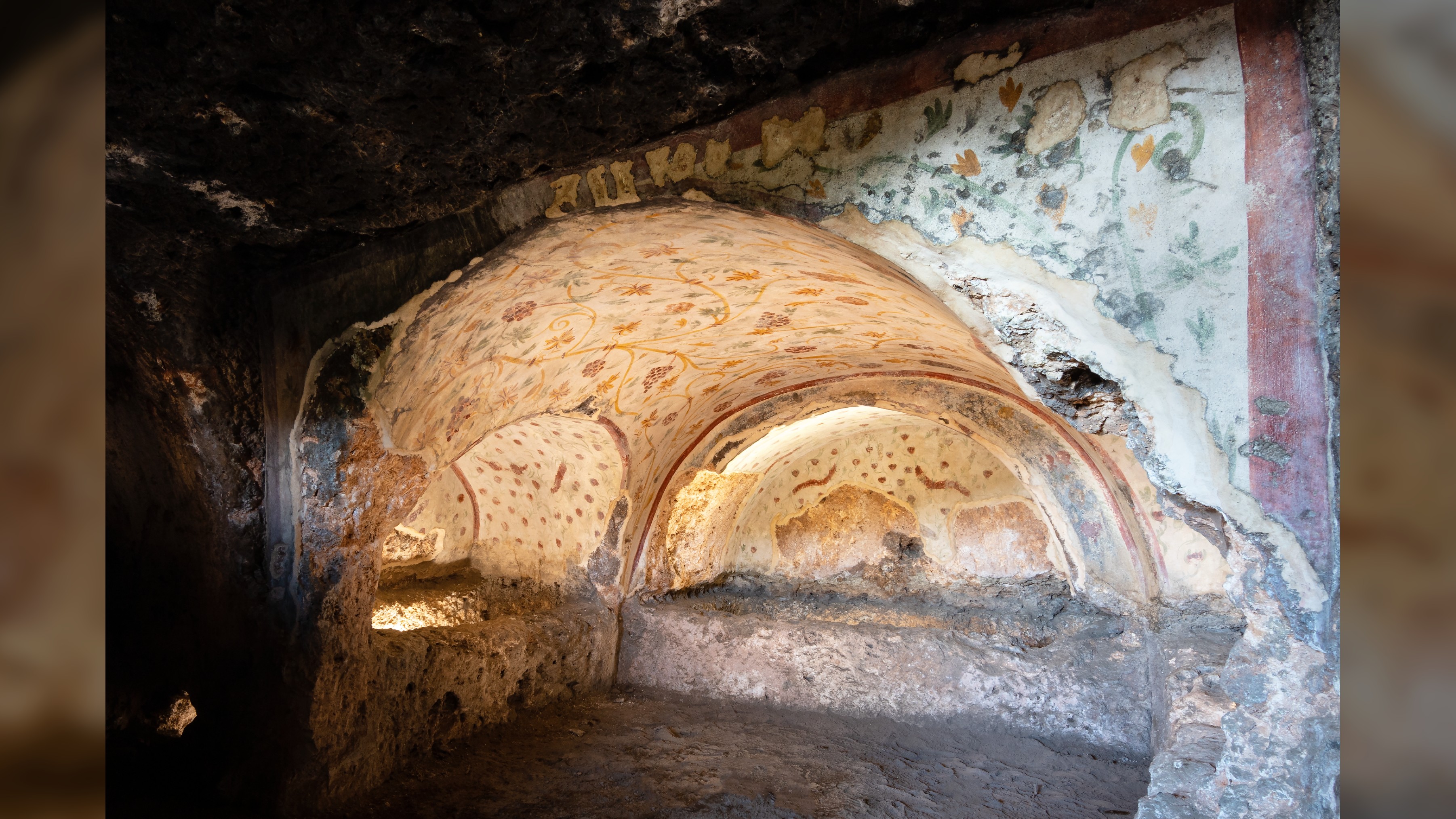
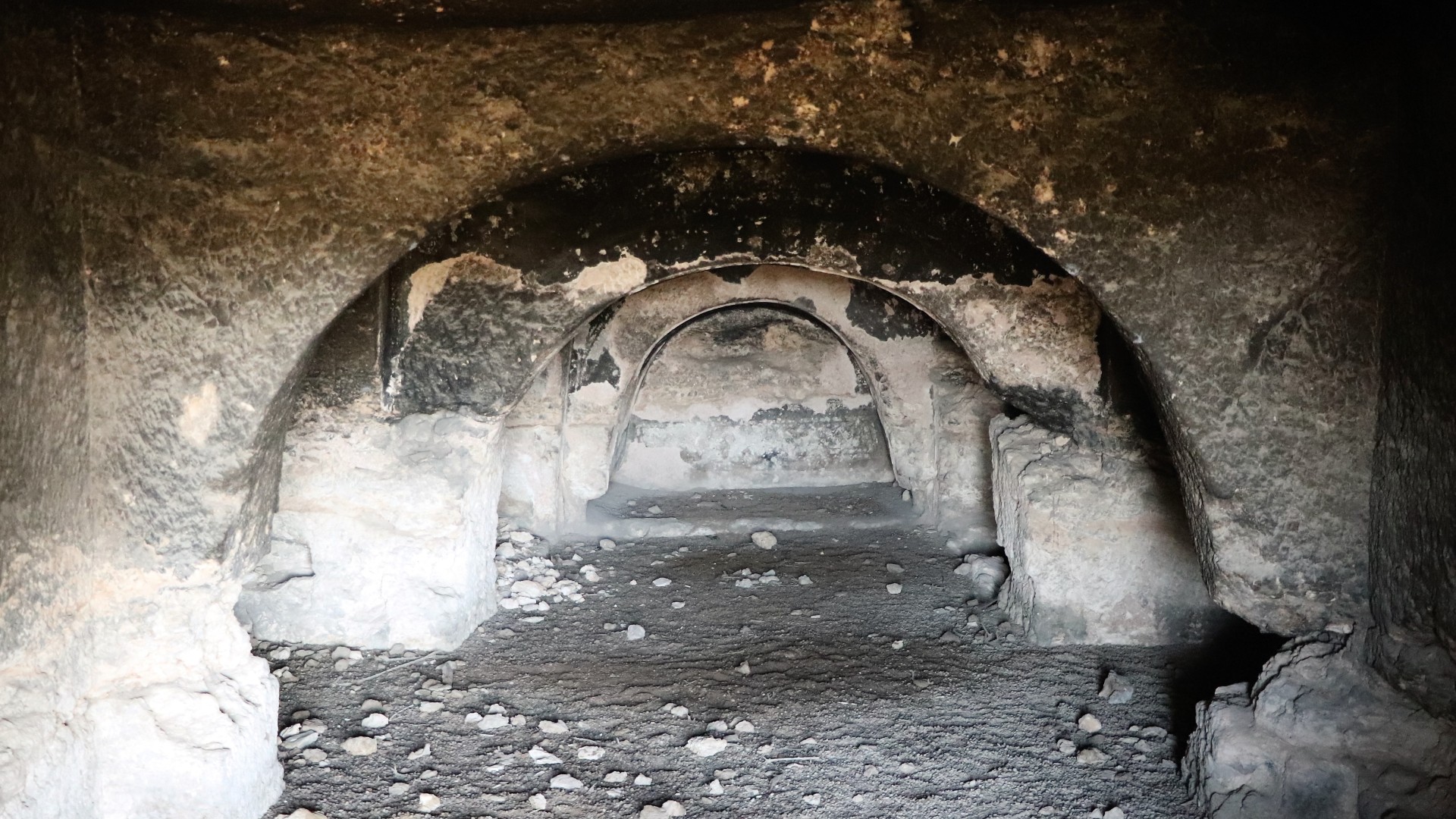
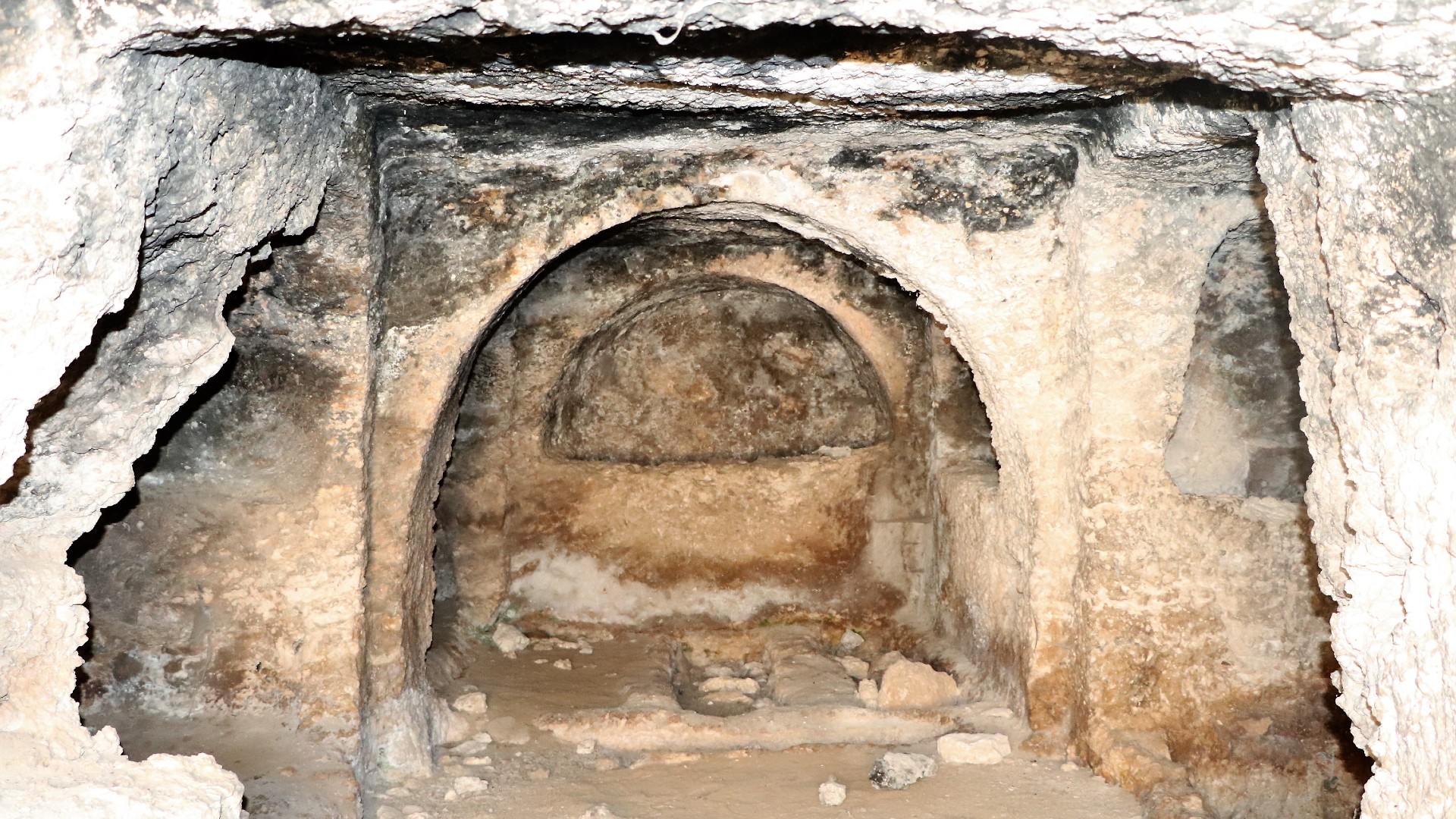
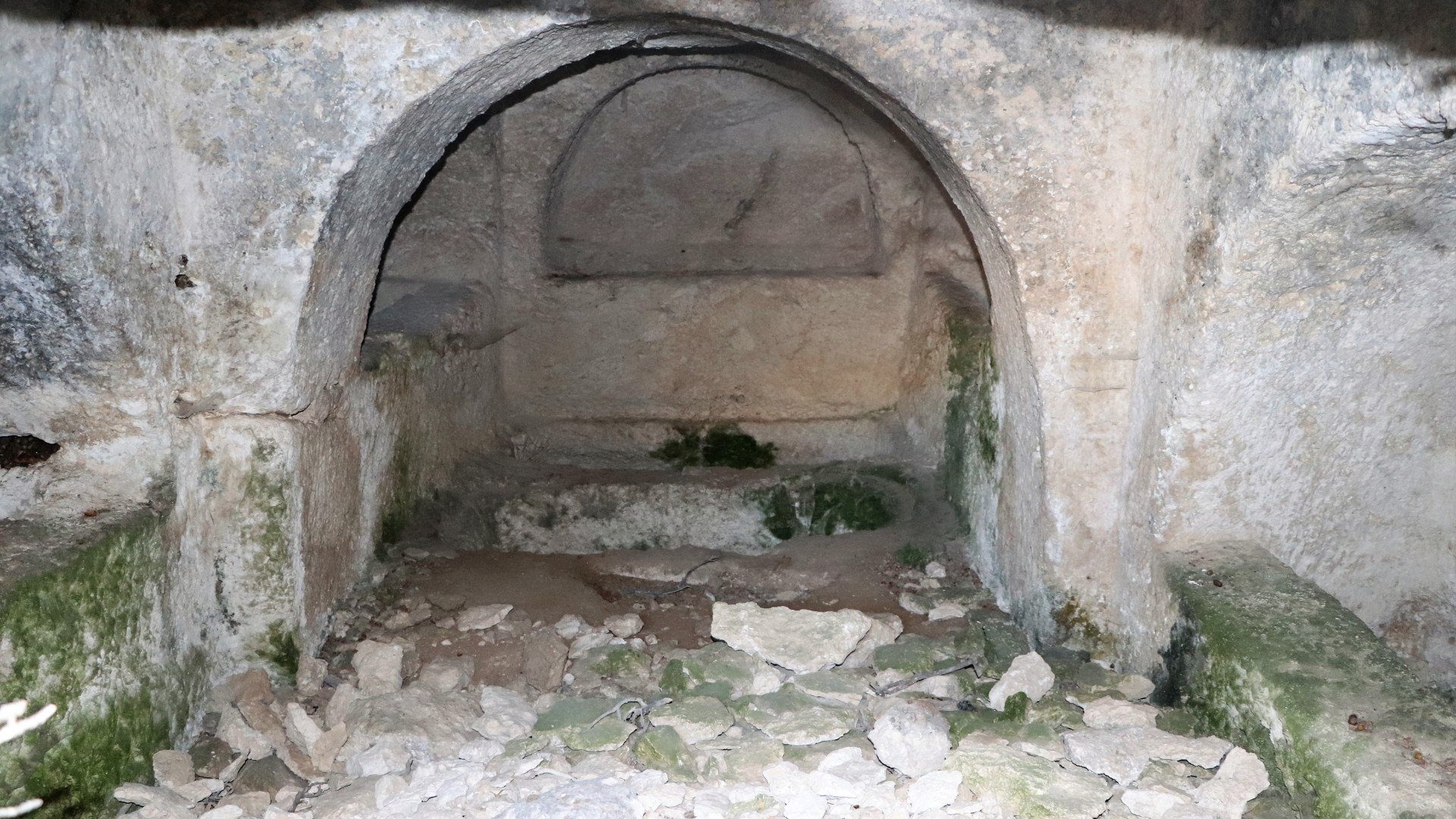
Tombs of the valley
In 2018, when excavating one of the rock-cut chamber tombs, the archaeologists found human bones dating to the second to third centuries A.D. So, in 2021, the team focused on the necropolis. "As a result of this work, which has been dangerous at times, the documentation of approximately 400 rock-cut chamber tombs that can be noticed on the surface has been completed," Can said.
However, the necropolis was a hotspot for grave robbers, who destroyed burials as they stole precious jewelry and other artifacts from the tombs over the centuries. The archaeologists still found plenty of clues that the deceased individuals date to Roman times. For instance, pottery fragments and coins discovered in the excavated tombs indicate that they date from the second to fourth centuries A.D., during the Roman period. "In addition, the technique of the wall paintings covering the walls, vaults and ceilings of the tombs and the style of the vegetal and figurative scenes depicted on them show Roman characteristics," Can said.
The team found different types of rock-cut chamber tombs, including single-roomed chambers, as well as "complex structures formed by arranging rooms one after the other," Can said. "These rooms were not created in one go. It is understood from the traces on the walls that these tombs were originally designed as a single room. However, in time, when there was no place for burial in this single room, the room was expanded inwards and the second, third and then the fourth rooms were added."
Related: Carved in stone: The ancient city of Petra (photos)
Some tombs still had artifacts that were likely meant to help the deceased in the afterlife, Can said. These grave goods included mirrors, diadems, rings, bracelets, hairpins, medical instruments, belts, drinking cups and oil lamps, all of which shed light on the people buried in the tombs, such as their sex, occupation, habits and burial date.
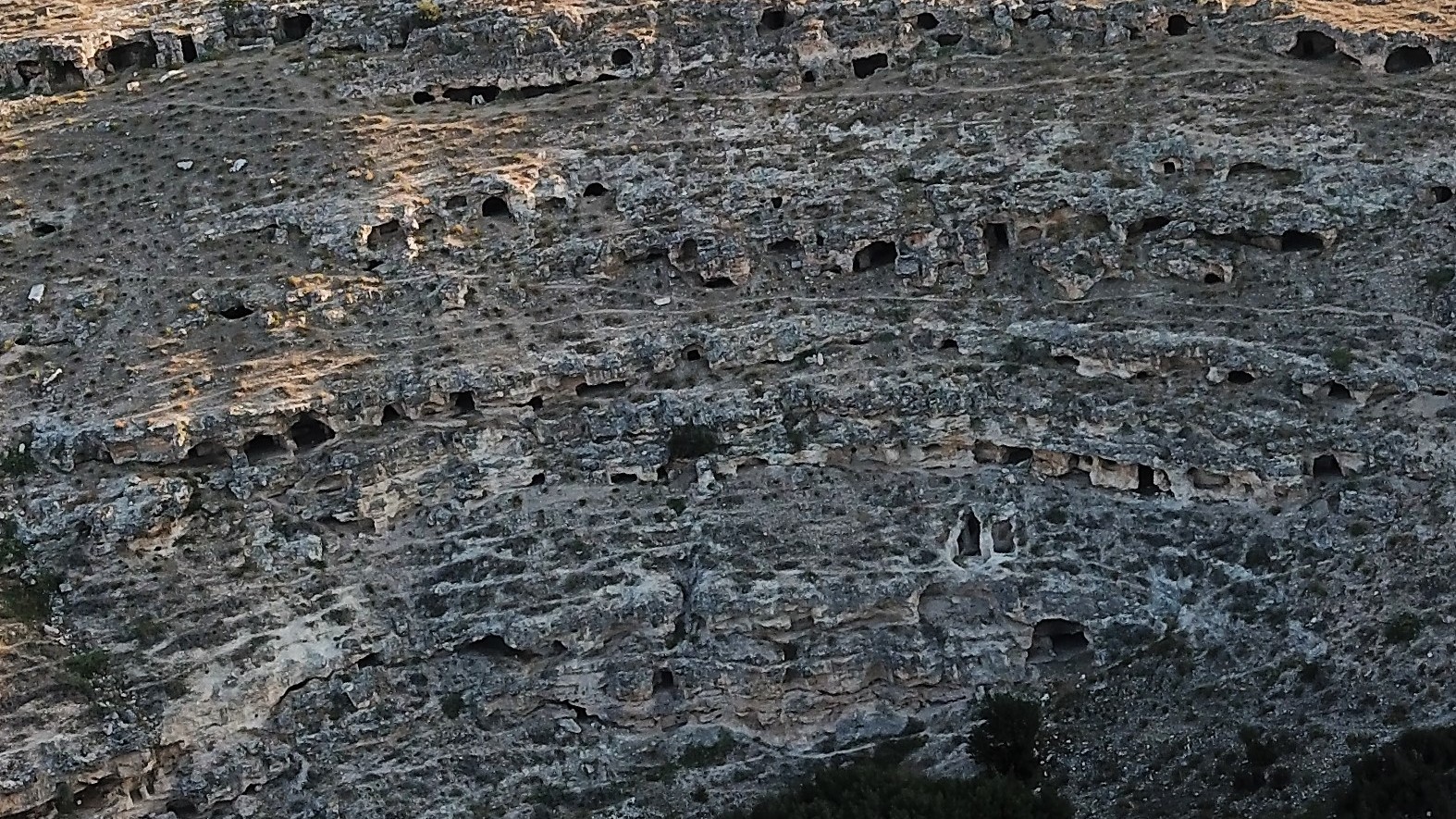
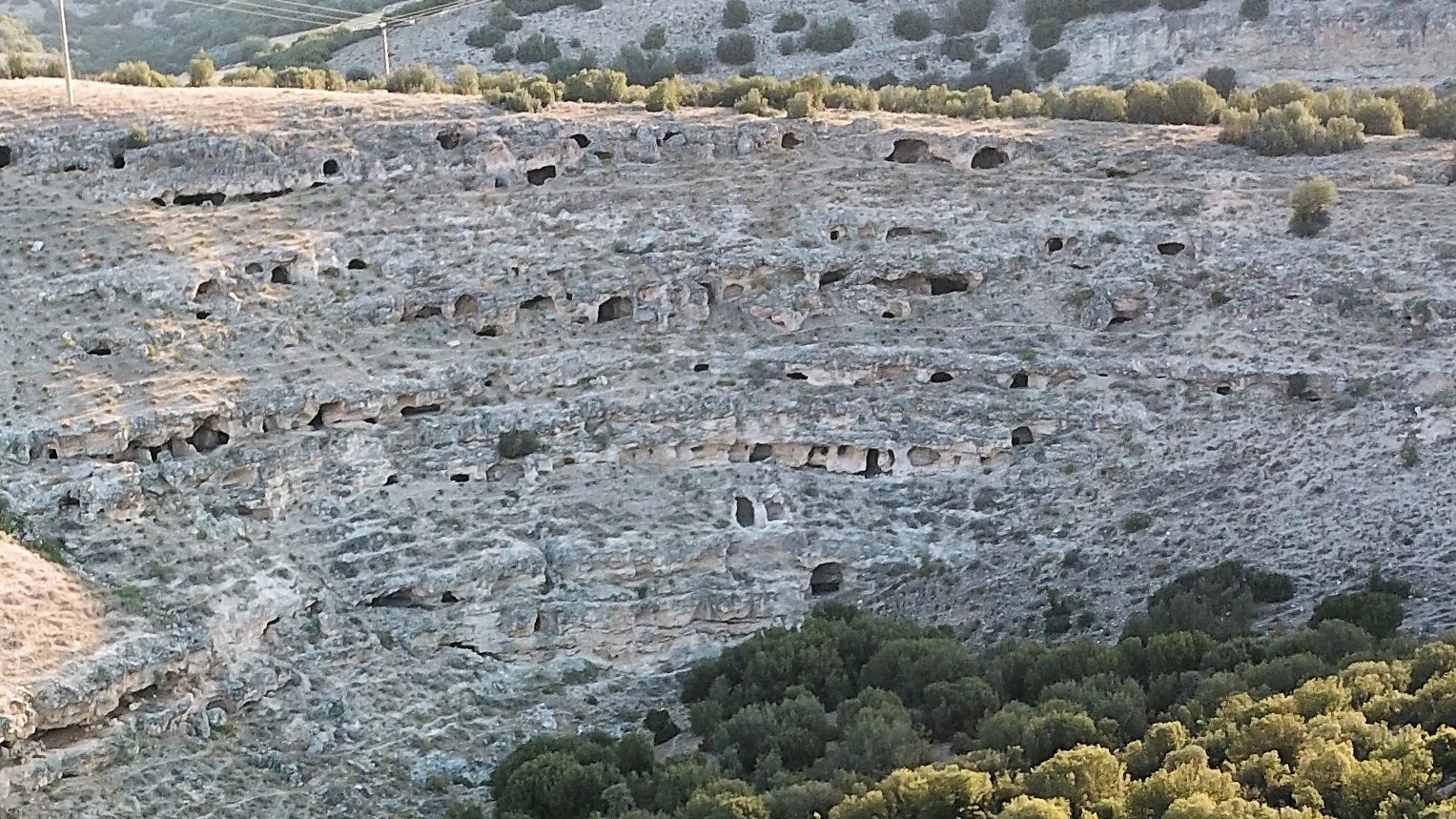
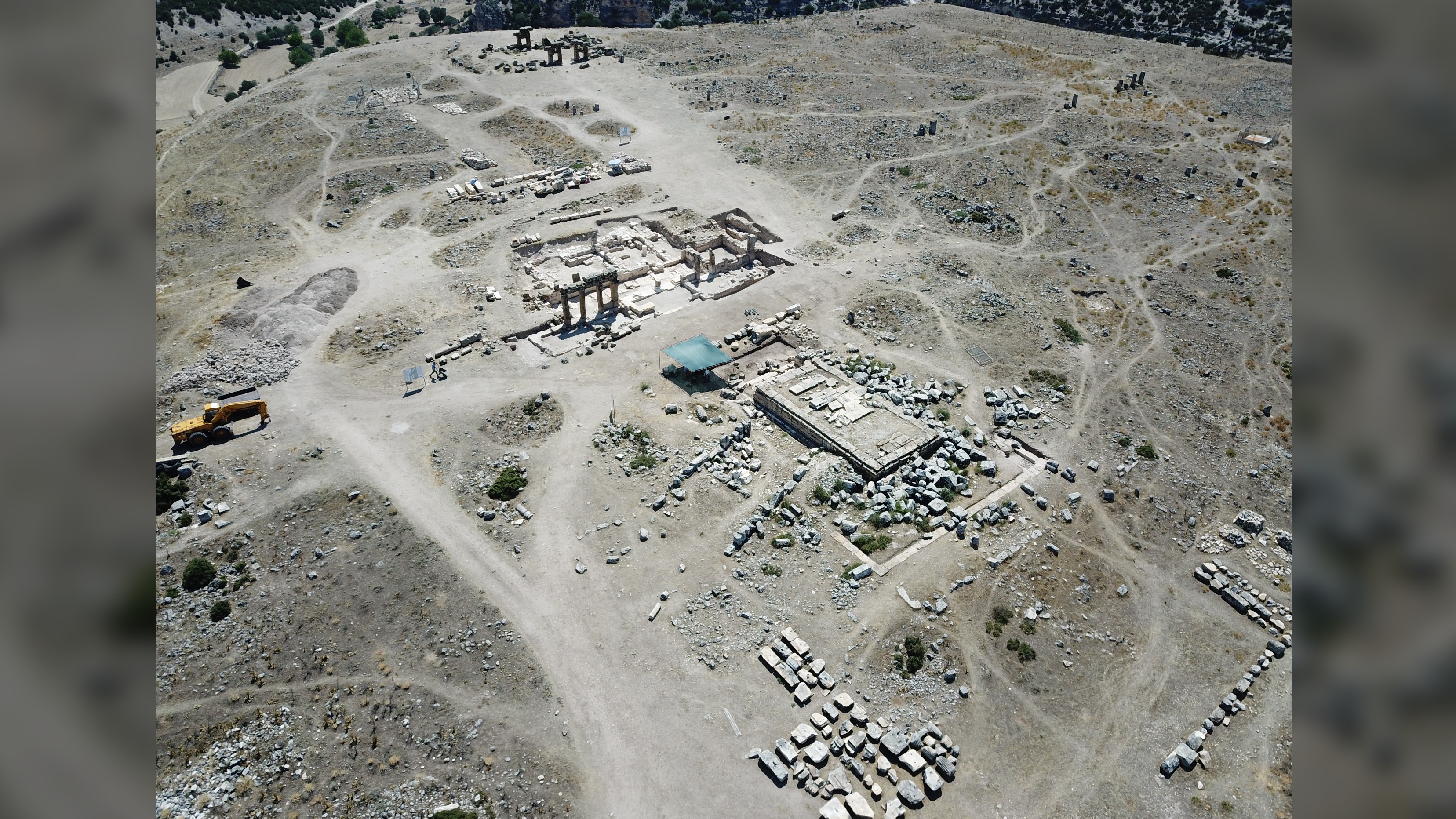
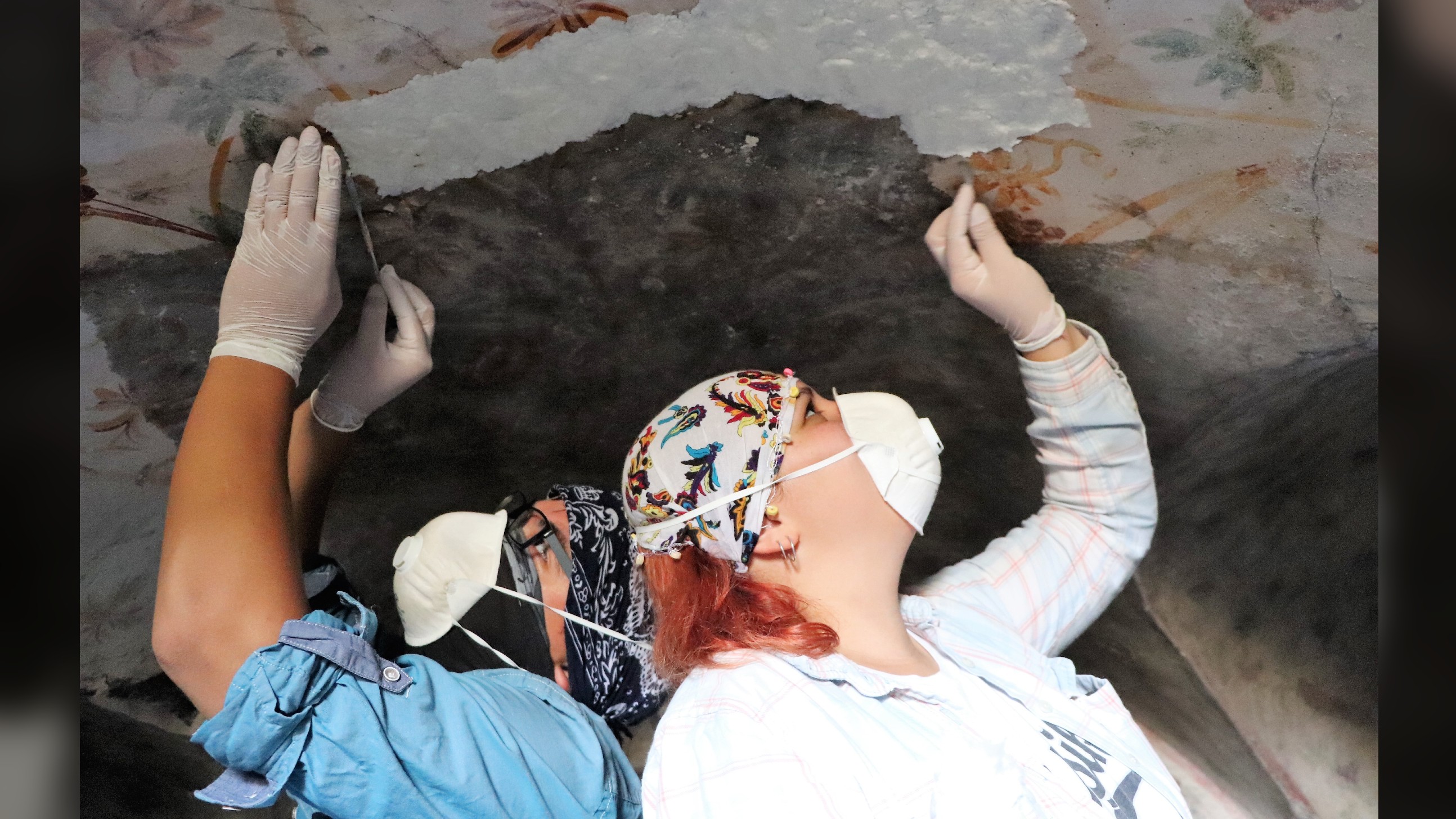
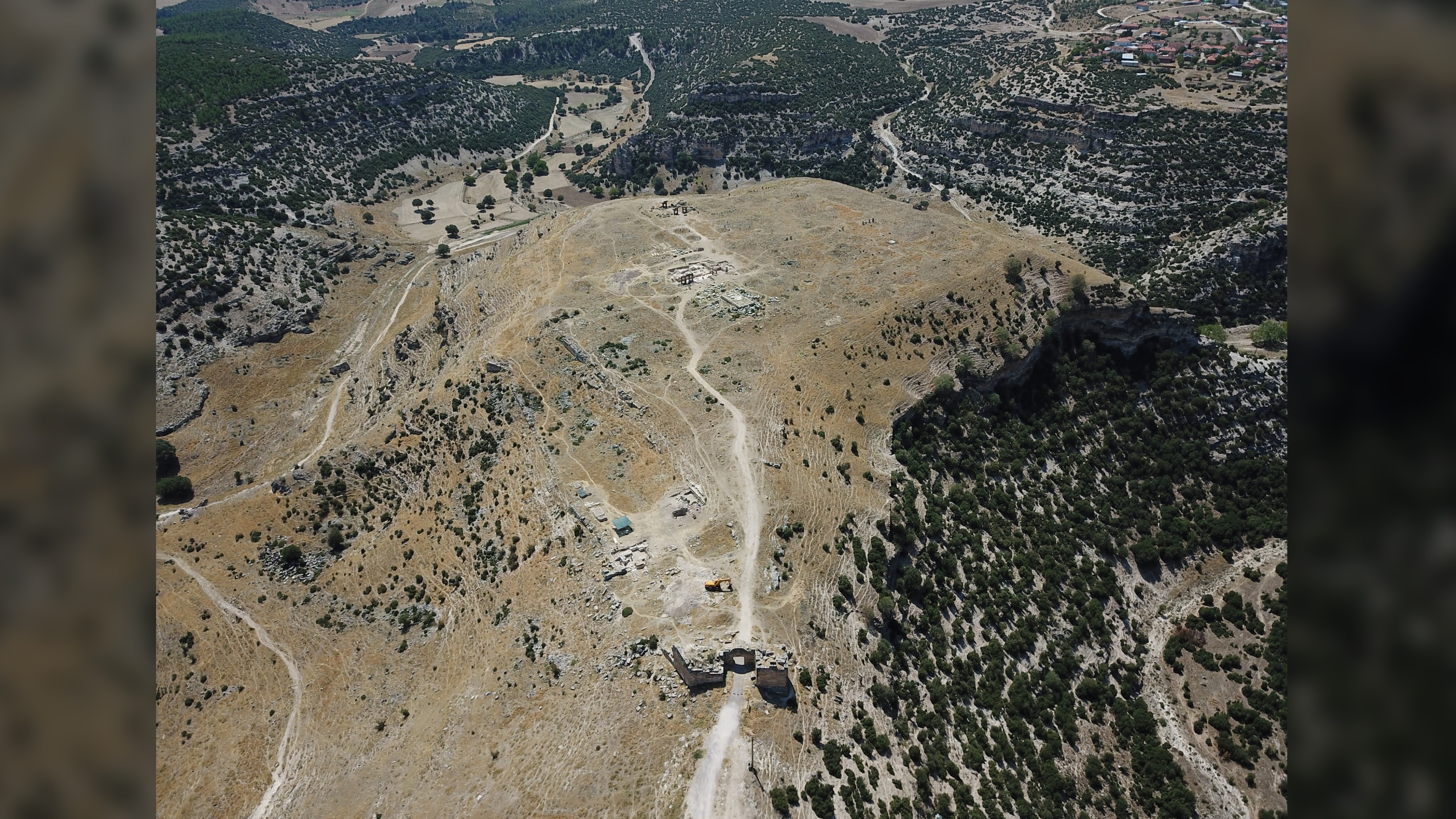
Beautiful paintings
The walls and ceilings of these burial chambers were decorated with colorful, intricate paintings, although many have deteriorated over the millennia, Can said. The murals in 24 of these chambers are still visible, but they're in bad shape.
"Some of these tombs were used as animal shelters by shepherds a long time ago," Can said. "The frescoes were covered with a dense and black soot layer due to the fires that were set in those times." But the restoration-conservation team was able to clean some of the paintings, revealing the vibrant floral, geometric and figurative scenes painted on the walls.
"Vines, flowers of various colors, wreaths, garlands, geometric panels are the most frequently used motifs," Can said. "In addition to these, mythological figures — such as Hermes (Mercury), Eros (Cupid) [and] Medusa — and animals such as birds and dogs are included in the wide panels."
There are hundreds more graves to be excavated, and "all wall paintings will be revealed with the excavations to be made in the necropolis in the coming years," he noted.
The team also plans to do DNA and chemical studies that will reveal the deceased individuals' ancestries, as well as their sex, age and nutritional habits, Can said.
Blaundos is open to tourists. As the excavations reveal more of the city, Can hopes to protect the new findings and share them with the world.
Originally published on Live Science.

Laura is the archaeology and Life's Little Mysteries editor at Live Science. She also reports on general science, including paleontology. Her work has appeared in The New York Times, Scholastic, Popular Science and Spectrum, a site on autism research. She has won multiple awards from the Society of Professional Journalists and the Washington Newspaper Publishers Association for her reporting at a weekly newspaper near Seattle. Laura holds a bachelor's degree in English literature and psychology from Washington University in St. Louis and a master's degree in science writing from NYU.










